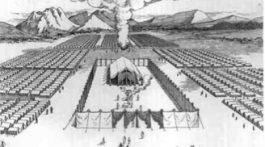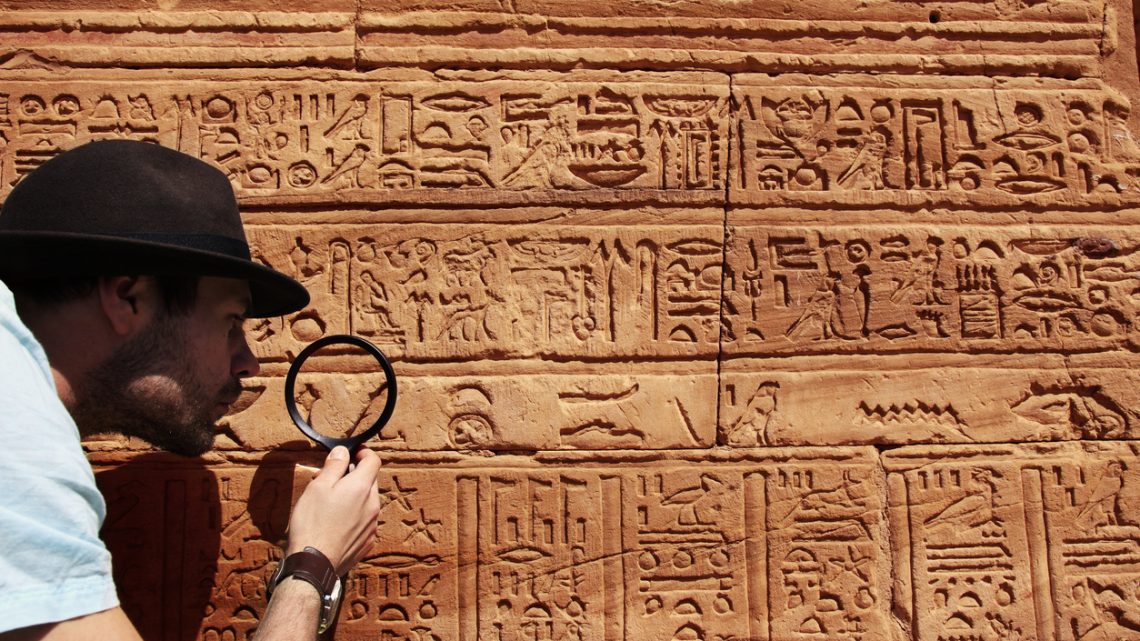Sabbath School lesson for May 30-June 5, 2020
Overview
It helps to know how archaeology and historical documents support what we find in the Bible. This week we discovered studies and findings that do support the Biblical narrative about…
- King David, his son Solomon, and Israel’s monarchy (Sunday)
- the prophet Isaiah, King Hezekiah, and Sennacherib, king of Assyria (Monday)
- the prophet Daniel, King Nebuchadnezzar, and the kingdom of Babylon (Tuesday)
- the life and death of Jesus (Wednesday)
- many heroes of faith in Hebrews 11 (Thursday)
Introduction
The Bible is a unique historical document, encompassing the history of mankind in the most comprehensive way possible. It records our very beginnings on this planet to the creation of a new heavens and earth where we will once again experience the close relationship to God that He intended for us in the Garden of Eden.
Archaeology has been at work for about two hundred years now, but with all their efforts to uncover evidence in support of biblical writings, there has only been a fraction of ancient sites that have been fully studied and analyzed.
Even with their limited studies, however, there have been amazing finds in the last few decades. We will take a look at some of these discoveries this week in an attempt to bolster our faith in the truthfulness of God’s word.
Memory Text: “I am the Lord your God, who brought you out of the land of Egypt.” Exodus 20:2 [and Deuteronomy 5:6] NKJV
God expects us to look back at history, our history, to see where He has brought us–on a personal level, as well as God’s people as a whole.
When we see God’s leading, His provisions for our care, and His desire to encompass us with His love, we find it easier to dismiss the historical criticism that the world has used to discredit the integrity of God’s Holy Bible.
God’s word stands the test of time, especially when we accept and serve the Author of its pages.
Sunday: David, Solomon, and the Monarchy
King David, his son Solomon, and those who later ruled, are described extensively in the Bible. Therefore, it would be important to verify something of Israel’s monarchy (and Judah’s, after the kingdom was divided) from the archaeological studies that have taken place.
Jesus is found in the lineage of David, so anything pertaining to these kings would help support the accuracy of the Bible and the truth of our Christian faith.
As recently as 2008 and 2013, there have been two ancient inscriptions found that may be the oldest Hebrew writing ever discovered. One of these inscriptions mentions the name of Eshbaal, one of Saul’s sons, who is mentioned in 1 Chronicles 9:39.
In addition, the geographical site of David’s battle with Goliath has been identified. One of the cities near the area has been found to have two gates, unusual for those times. It’s believed to be Shaaraim, a city mentioned in 1 Samuel 17:52. The name Shaaraim means “double gates” in Hebrew.
Further evidence related to the time of Israel’s monarchy has come in the form of a massive inscription, excavated at the northern city of Tel Dan in 1993. This inscription by King Hazael of Damascus records his victory over the “king of Israel” and the king of the “house of David”.
Bible Verses to Ponder and Share:
1 Samuel 17:1-3, 52
- How does such a precise description of the battle site contribute to the feeling of authenticity in this story of David and Goliath, and help archaeologists find it?
- Why do you think merely finding the double gates that most likely belonged to the city of Shaaraim seem important to archaeologists?
1 Chronicles 9:39
- What would be significant for the name of Saul’s son Eshbaal to be found on an ancient inscription?
Monday: Isaiah, Hezekiah, and Sennacherib
Isaiah 36 and 37 provides an exciting account of a battle in the Holy Land in 701 B.C. King Sennacherib of Assyria tried to conquer many cities in Judea, including Jerusalem. But King Hezekiah’s touching prayer to God resulted in Jerusalem being spared.
Archaeologists have uncovered several of Sennacherib’s accounts in Nineveh, the capital of Assyria. These accounts depict his victories in several towns and cities around Jerusalem.
A central room of the king’s palace even depicts one of his conquests on the walls there, specifically his defeat of the Judean city of Lachish. The burnt debris they uncovered in Lachish verify its total destruction.
Absent, however, from all these accounts is any mention of the defeat he suffered at Jerusalem, recorded by Isaiah. Of course, kings would typically only document their battle victories, not their losses. So, we have only to conclude that Jerusalem was not one of his victories in this campaign.
Bible Verses to Ponder and Share:
Isaiah 37:33-35
- Why did God spare Jerusalem?
- Can you think of other evidence that God acts in history to make the outcome turn out in accordance with His will?
Isaiah 37:36-37
- Although it seems extreme, why might this miraculous event (possibly just dying in their sleep) have been the only way to stop King Sennacherib from more killing and destruction?
Isaiah 36:1-3
- How will all the names mentioned here be helpful to archaeologists as they uncover other evidence to support this account?
Tuesday: Daniel, Nebuchadnezzar, and Babylon
Even though the behavior of the Jewish nation caused their captivity and exile to Babylon, God preserved a remnant of faithful followers among the captives.
These included Daniel and his friends, who purposed in their hearts to remain loyal to God, even when it came to the dietary guidelines He had prescribed. Their decision caused their superior physical and mental status to be recognized by the king, who rewarded them with high positions in Babylon’s government. God hadn’t forsaken His people entirely, but was working behind the scenes to make a difference in Israel’s future.
Archaeologists have uncovered evidence to substantiate the events that took place during this time period. For example, as recently as July 2007, someone from the University of Vienna working at the British Museum, found a tablet from the time of Nebuchadnezzar. On it was the name of Nebusarsekim. This was a Babylonian official mentioned in Jeremiah 39:3. Other names have been discovered as well, that give credence to the Biblical narrative.
Another interesting finding was a gate from the archaeological site of Babylon. One of eight gates, named after Babylonian gods, the Ishtar gate, was excavated and reconstructed in a museum in Berlin. This gate showed images of 120 lions. This is of interest to readers of Daniel 7:4, which describes his vision of a lion with eagle’s wings, signifying the Babylonian kingdom.
Bible Verses to Ponder and Share:
Daniel 1:8 and 4:34, 37
- How did Daniel’s decision so early in his captivity affect the entire nation, when Nebuchadnezzar finally became converted?
Jeremiah 39:3
- Why does finding the names of even minor characters in the story excite biblical scholars?
Daniel 7:4
- How does finding 120 lions on the Ishtar gate, excavated from Babylon, show us why a lion represented Babylon in Daniel’s vision? How does it contribute to our confidence in Daniel’s record of his captivity?
Wednesday: The Historical Jesus
Although the Gospels provide us with a primary source of information about Jesus Christ of Nazareth, it has been enlightening to find Him mentioned in other, secular records as well. He is mentioned by historians of the first two centuries. Notably, there is Tacitus, a Roman historian, who writes of Jesus and His execution by Pontius Pilate.
In 1990, a family tomb south of Jerusalem uncovered 12 ossuaries, bone boxes. One of them contained the name “Joseph son of Caiphas”. Caiphas was the high priest involved in Jesus’ trial and execution.
The existence of Jesus was verified, as well, by Josephus, a Jewish historian who wrote in behalf of the Romans. He wrote, “Besides which he also deprived Joseph, who was also called Caiphas [sic], of the high priesthood, and appointed Jonathan, the son of Ananus, the former high priest, to succeed him.” ~Josephus Complete Works (Grand Rapids, Mich.: Kregel Publications, 1969), book 18, chapter 4, p. 381
A Roman governor, Pliny the Younger, also wrote in 112-113 A.D. to the emperor Trajan. He asked him how he should treat the Christians. He described how they would meet early on a certain day, and sing hymns to a god.
Bible Verses to Ponder and Share:
Matthew 26:57, 27:1, 2, Mark 14:53, 15:1, John 18:12-14, 28, 29
- How do all the Gospel accounts of Jesus’ trial add to our confidence that it actually took place the way they testified?
- Why would finding proof of the governments of Caiphas and Pilate be important corroborating evidence of Jesus’ trial?
Thursday: Faith and History
God, of course, is in charge of man’s history, but a great reminder of how people can also affect history is given in Hebrews 11, called the “faith chapter”. It was the faith of a great many of the characters we read about in the Bible that made a difference in history. And not only their faith, but how they acted on their faith.
For example, Noah acted in faith when he built the ark and preached about a coming flood for 120 years. And Abraham acted in faith when he left Ur, his homeland, and ventured out to find a new country that God had promised him. Moses’ faith caused him to leave Egypt, where he became a shepherd. Years later, under the guidance of the Lord, he ended up leading his people out of slavery. And don’t forget Rahab, a citizen of Jericho who trusted in God’s deliverance and later became part of the lineage of Jesus.
History is a fascinating subject, causing us to remember the faithful acts of those who came before us, and see how their individual actions affected the lives of many others after they were gone. It encourages us to live a life of faith.
Bible Verses to Ponder and Share:
Hebrews 11:1
- How do you explain this definition of faith?
- What brings evidence and substance to our faith?
Hebrews 11:6
- Why is faith necessary to please God?
- Why does it keep repeating the words “by faith” that people did things in this chapter of faith?
- Why was it important to remember that it was their faith that motivated them?
Friday: What We Have Learned This Week
Seeing the Bible as historically accurate helps us have faith in God’s word. Biblical archaeologists have been successful, in the last few decades especially, in confirming at least the existence of many of the characters we are so familiar with, but so far only through accounts found in the Bible. Their work, however, has only scratched the surface of what they hope to uncover in the future.
Sources outside the scriptural record have been found to support the time of David and the monarchy that followed his reign. Even Isaiah’s account of Jerusalem being spared when the king of Assyria was rampaging all the cities in the area has been proven accurate to some extent by archaeologists’ findings.
In addition, Babylon has received much attention, confirming to Bible scholars the events recorded by Daniel about King Nebuchadnezzar.
All these findings, including many historical documents from the time of Christ, bolster our faith in the Bible as a reliable guide. We can not only rely on it to understand our past, but to guide our paths now, and lead us into a better future.
You might find Ed Dickerson’s Outlook article helpful in understanding why the Old Testament is hard to understand. See it at https://outlookmag.org/hard-questions-honest-answers/
Next Week’s Lesson: The Bible and Prophecy
To read the Sabbath School Lesson Quarterly or see more resources for its study, go to
https://www.absg.adventist.org/
Other Outlook blogposts by Teresa Thompson, are at http://outlookmag.org/author/teresathompson/
Also, Teresa is livestreaming daily about the lesson on her Facebook page









